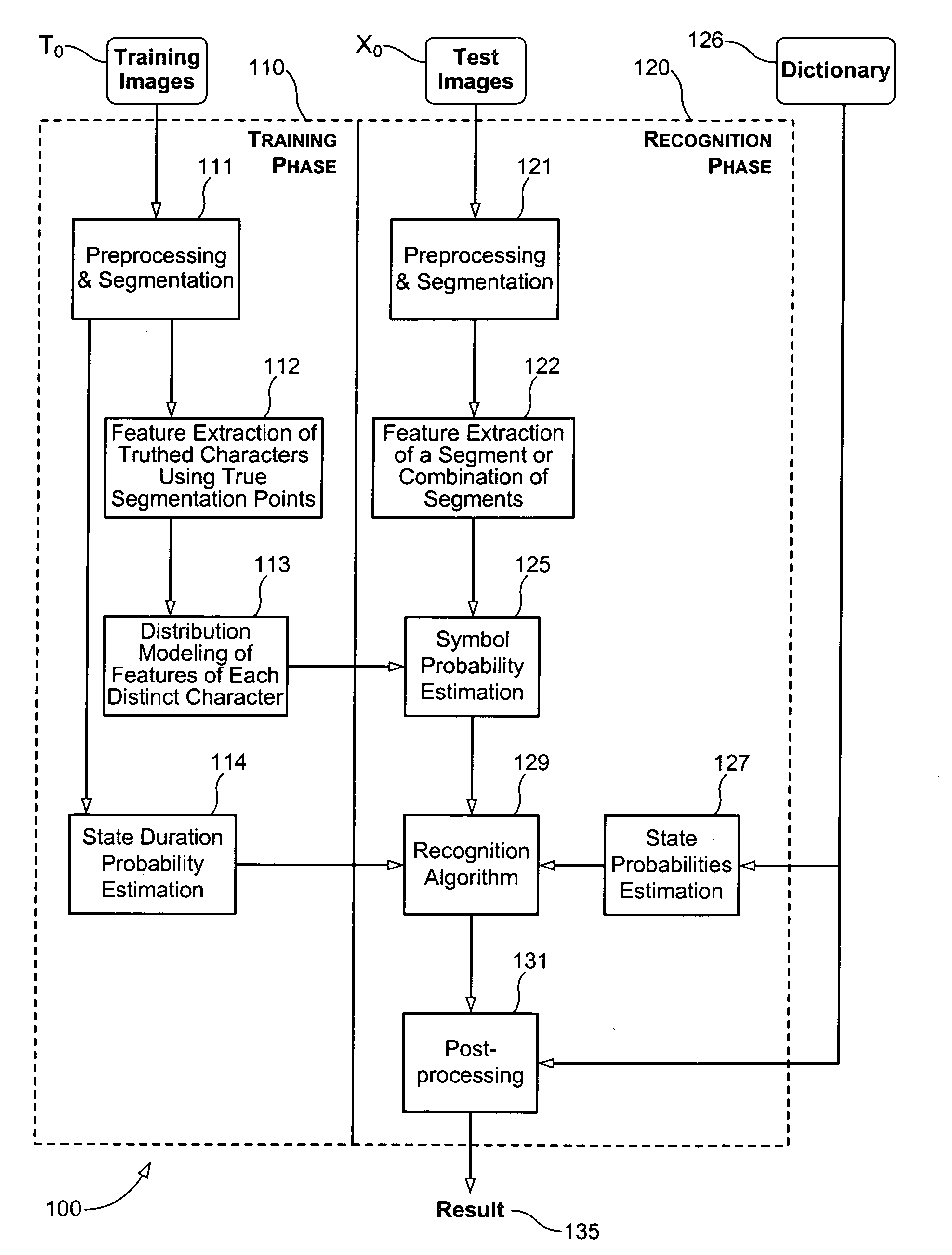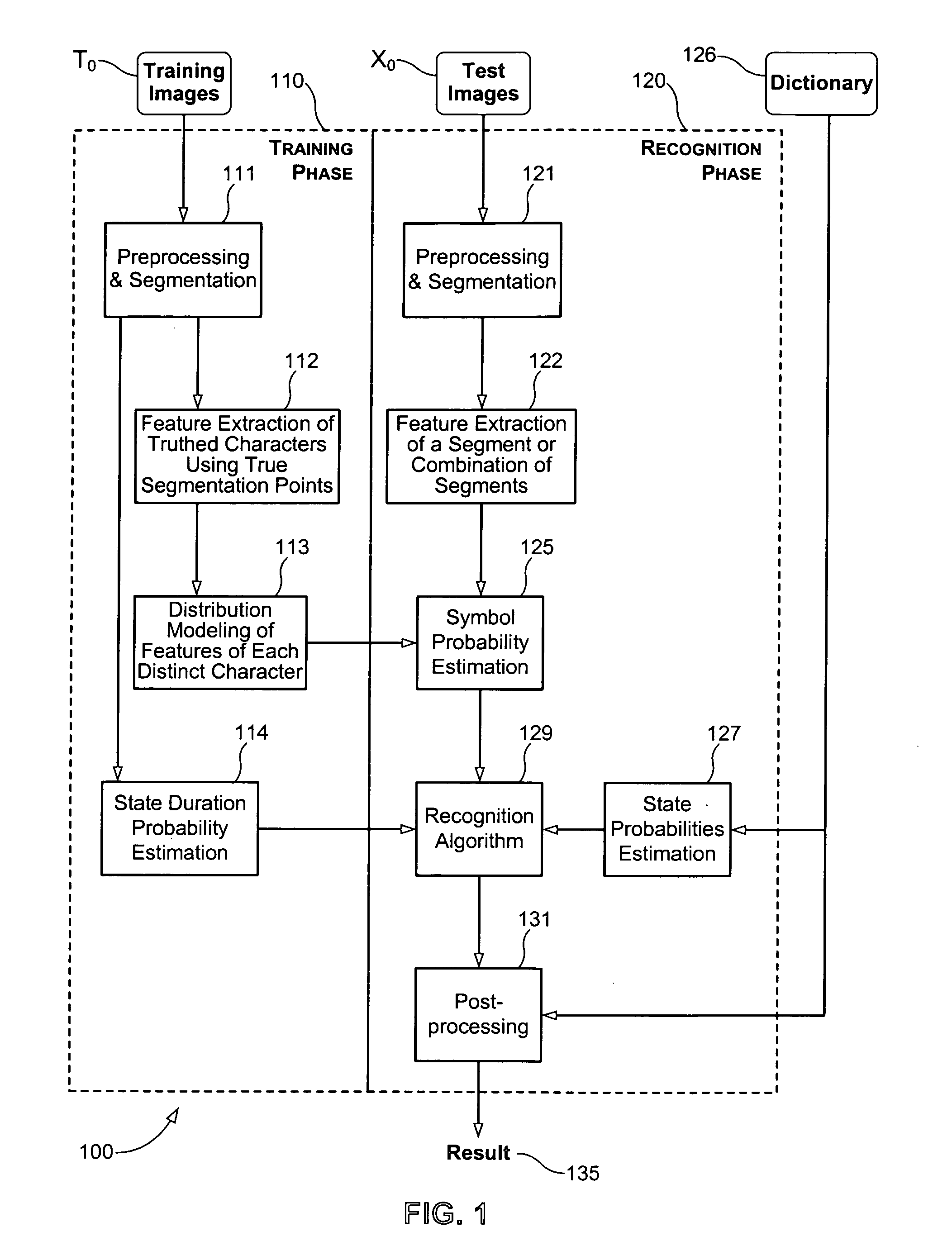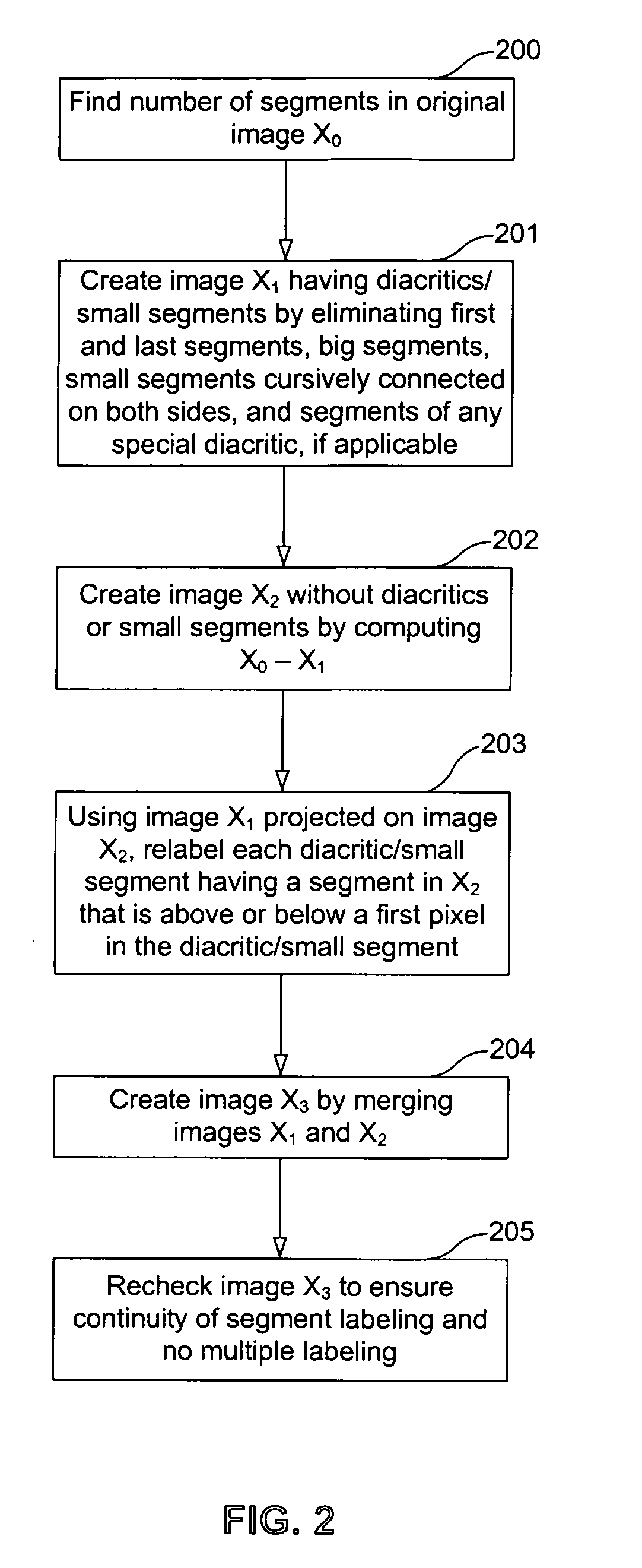Cursive character handwriting recognition system and method
a recognition system and cursive character technology, applied in the field of cursive character handwriting recognition system and method, can solve the problems of lexicon and inability to adapt to changing applications, arabic presents a particular challenge, and cannot be applied in a straightforward manner to another language with different characters
- Summary
- Abstract
- Description
- Claims
- Application Information
AI Technical Summary
Benefits of technology
Problems solved by technology
Method used
Image
Examples
example
[0091]The following example describes an off-line Arabic handwritten word recognition system according to an embodiment of the present invention.
[0092]A corpus was assembled consisting of about 74,000 Arabic character images for training symbol probabilities and about 1500 Arabic word images for computing segmentation statistics. An Arabic handwriting corpus was created using multiple handwriting samples of sixty-two Arabic words that cover a majority of Arabic letter glyphs. These 62 words have a high enough frequency so as to be familiar to most native speakers (500 occurrences in the Arabic Gigaword corpus by Graff, D., “Arabic Gigaword,” 1st ed., Linguistic Data Consortium, Philadelphia (2003) (referred herein as the “Arabic Gigaword corpus”), increasing the likelihood that the respondents will write naturally. Respondents write each word six (6) times on a data collection form, so that multiple variations from the same writer may be captured. The data collection forms were scan...
PUM
 Login to View More
Login to View More Abstract
Description
Claims
Application Information
 Login to View More
Login to View More - R&D
- Intellectual Property
- Life Sciences
- Materials
- Tech Scout
- Unparalleled Data Quality
- Higher Quality Content
- 60% Fewer Hallucinations
Browse by: Latest US Patents, China's latest patents, Technical Efficacy Thesaurus, Application Domain, Technology Topic, Popular Technical Reports.
© 2025 PatSnap. All rights reserved.Legal|Privacy policy|Modern Slavery Act Transparency Statement|Sitemap|About US| Contact US: help@patsnap.com



